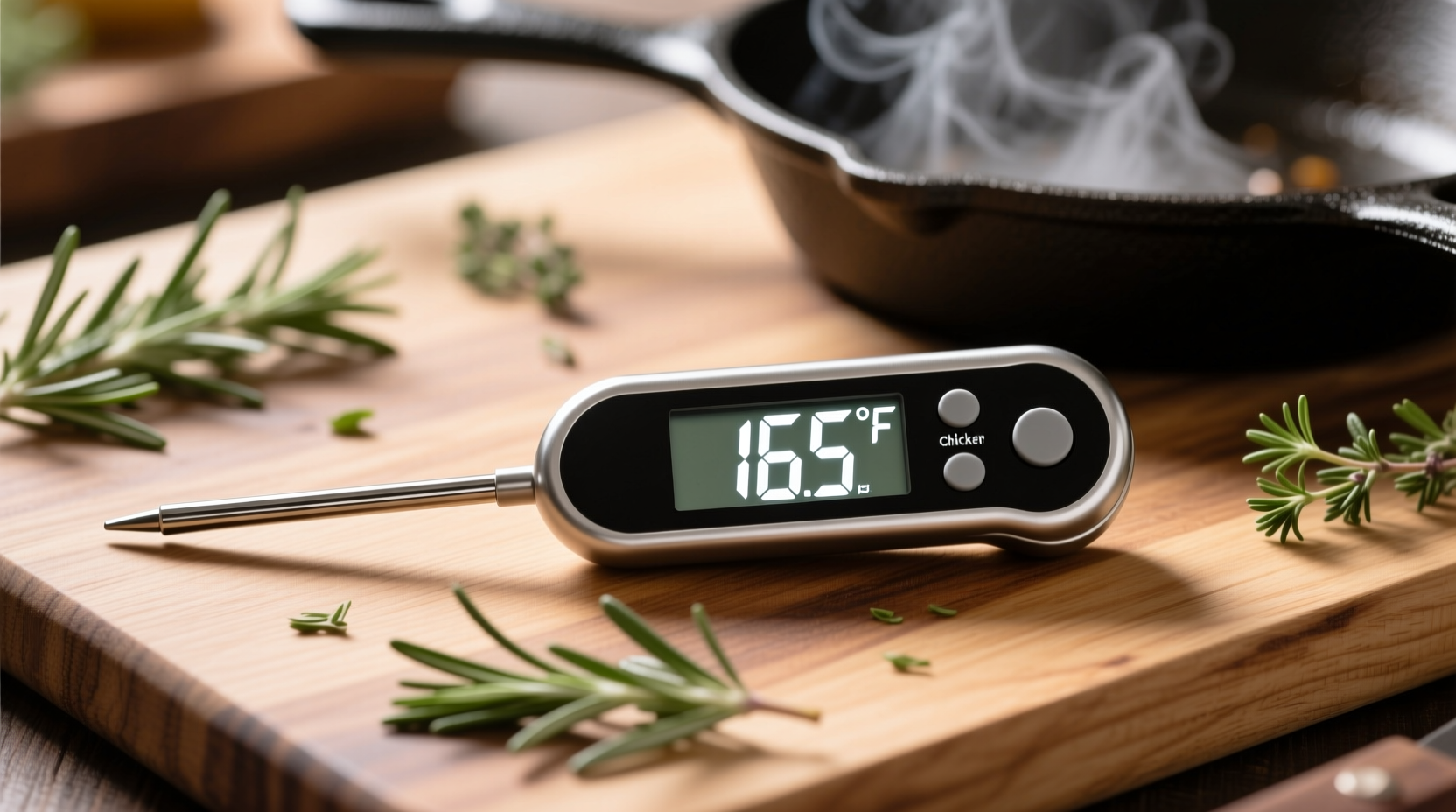The safe minimum internal temperature for all chicken is 165°F (74°C), but cooking times vary significantly by cut and method. Boneless chicken breasts take 20-30 minutes at 375°F, while bone-in thighs require 35-45 minutes. Always verify with a meat thermometer for food safety.
Getting chicken cooking times right separates dinner disasters from perfectly juicy meals. Whether you're a weeknight warrior or weekend grill master, understanding the variables that impact cooking duration prevents dry, rubbery chicken or dangerous undercooking. This guide delivers precise timing based on USDA food safety standards and professional kitchen experience.
Why Cooking Time Alone Isn't Enough
"How long should you cook chicken" is actually the wrong question. Time varies based on multiple factors including thickness, starting temperature, cooking method, and equipment. Relying solely on time leads to inconsistent results. The critical metric is internal temperature - 165°F (74°C) for all poultry according to the USDA Food Safety and Inspection Service.

Your Chicken Cooking Time Cheat Sheet
Use these guidelines as starting points, but always verify with a thermometer. These times assume cooking at 375°F (190°C) unless specified:
| Chicken Cut | Approximate Time | Special Considerations |
|---|---|---|
| Boneless breast (6-8 oz) | 20-25 minutes | Cook to 160°F then rest to 165°F |
| Bone-in breast (10-12 oz) | 30-40 minutes | Bone adds 5-10 minutes |
| Boneless thigh | 25-35 minutes | Can safely cook to 175°F |
| Bone-in thigh | 35-45 minutes | Dark meat tolerates higher temps |
| Whole chicken (3-4 lbs) | 60-90 minutes | 15 minutes per pound + 15 min rest |
Cooking Method Matters Most
How you cook chicken dramatically impacts timing. These adjustments apply to standard 375°F cooking:
- Oven roasting: Add 5-10 minutes for convection ovens due to faster air circulation
- Grilling: Bone-in pieces need 35-50 minutes over indirect heat (2-zone setup)
- Pan-searing: Breasts take 6-8 minutes per side; thighs 8-10 minutes
- Sous vide: Precise timing at 145°F for 1.5 hours ensures perfect texture
The Critical Temperature Verification Step
Insert an instant-read thermometer into the thickest part, avoiding bone. The FDA Food Code specifies 165°F as the minimum safe temperature to destroy harmful bacteria like salmonella. Don't guess - verify. Digital thermometers provide readings in 3-5 seconds and pay for themselves in prevented foodborne illness.
Avoid These Common Timing Mistakes
Even experienced cooks make these errors that lead to dry or unsafe chicken:
- Mistake: Cooking breasts to 165°F in the oven without resting
Solution: Remove at 160°F; carryover cooking reaches 165°F during 5-10 minute rest - Mistake: Using the same time for frozen versus thawed chicken
Solution: Frozen chicken needs 50% more time; thaw overnight in refrigerator for best results - Mistake: Ignoring thickness variations
Solution: Pound breasts to even ¾-inch thickness for consistent cooking
Visual Doneness Cues When Thermometer Isn't Available
While thermometers are essential for safety, these secondary indicators help when verifying:
- Juices run clear, not pink
- Meat feels firm but yields slightly to pressure
- Internal color is white throughout (no translucent areas)
- Thigh joint moves freely when wiggled
Remember: Color alone isn't reliable - perfectly cooked chicken can appear slightly pink near bones due to myoglobin, while overcooked chicken may look white but be dry.
Resting Time: The Secret to Juicy Chicken
Always let chicken rest 5-10 minutes after cooking. This allows juices to redistribute, preventing dryness when cutting. During this critical phase, temperature continues rising 5-10 degrees (carryover cooking), which is why removing breasts at 160°F achieves perfect 165°F doneness.
Special Considerations for Different Cuts
Understanding each cut's characteristics prevents overcooking:
- Breasts: Lean and prone to drying; best cooked quickly at higher heat
- Thighs: Higher fat content tolerates longer cooking; ideal for braising
- Wings: Require higher heat (400°F+) for crispy skin without overcooking meat
- Whole chicken: Trussing promotes even cooking; breast tenting prevents drying
Food Safety Timeline: From Raw to Safe
Understanding the temperature danger zone is crucial for safe chicken preparation:
- Below 40°F: Safe for storage (refrigerator temperature)
- 40-140°F: Bacteria multiply rapidly (danger zone)
- 140-165°F: Bacteria die off during proper cooking time
- 165°F: Instant salmonella destruction (USDA standard)
Minimize time in the danger zone by cooking immediately after marinating and refrigerating leftovers within 2 hours (1 hour if above 90°F).
How long to cook chicken breast at 350 degrees?
Boneless chicken breasts take 25-30 minutes at 350°F. Bone-in breasts require 35-45 minutes. Always check internal temperature - remove at 160°F and let rest to reach the safe 165°F minimum.
Can chicken be done at 160 degrees?
Chicken breasts can be removed at 160°F since carryover cooking during resting will reach the safe 165°F. Dark meat like thighs benefits from cooking to 175°F for optimal texture, as the higher fat content prevents drying.
How do I know when chicken is done without a thermometer?
Check for clear juices (not pink), firm but yielding texture, and white internal color. Cut into the thickest part - no translucent areas should remain. However, these methods are less reliable than a thermometer for food safety.
Why is my chicken dry even when cooked to 165°F?
Dryness often occurs from skipping the resting period. Juices need 5-10 minutes to redistribute after cooking. Overcooking by even 5°F beyond 165°F significantly reduces moisture retention in lean cuts like breasts.
How long should chicken rest after cooking?
Cover loosely with foil and rest for 5-10 minutes. Smaller cuts like breasts need 5 minutes; larger pieces or whole chickens benefit from 10-15 minutes. This allows carryover cooking to complete and juices to redistribute throughout the meat.











 浙公网安备
33010002000092号
浙公网安备
33010002000092号 浙B2-20120091-4
浙B2-20120091-4